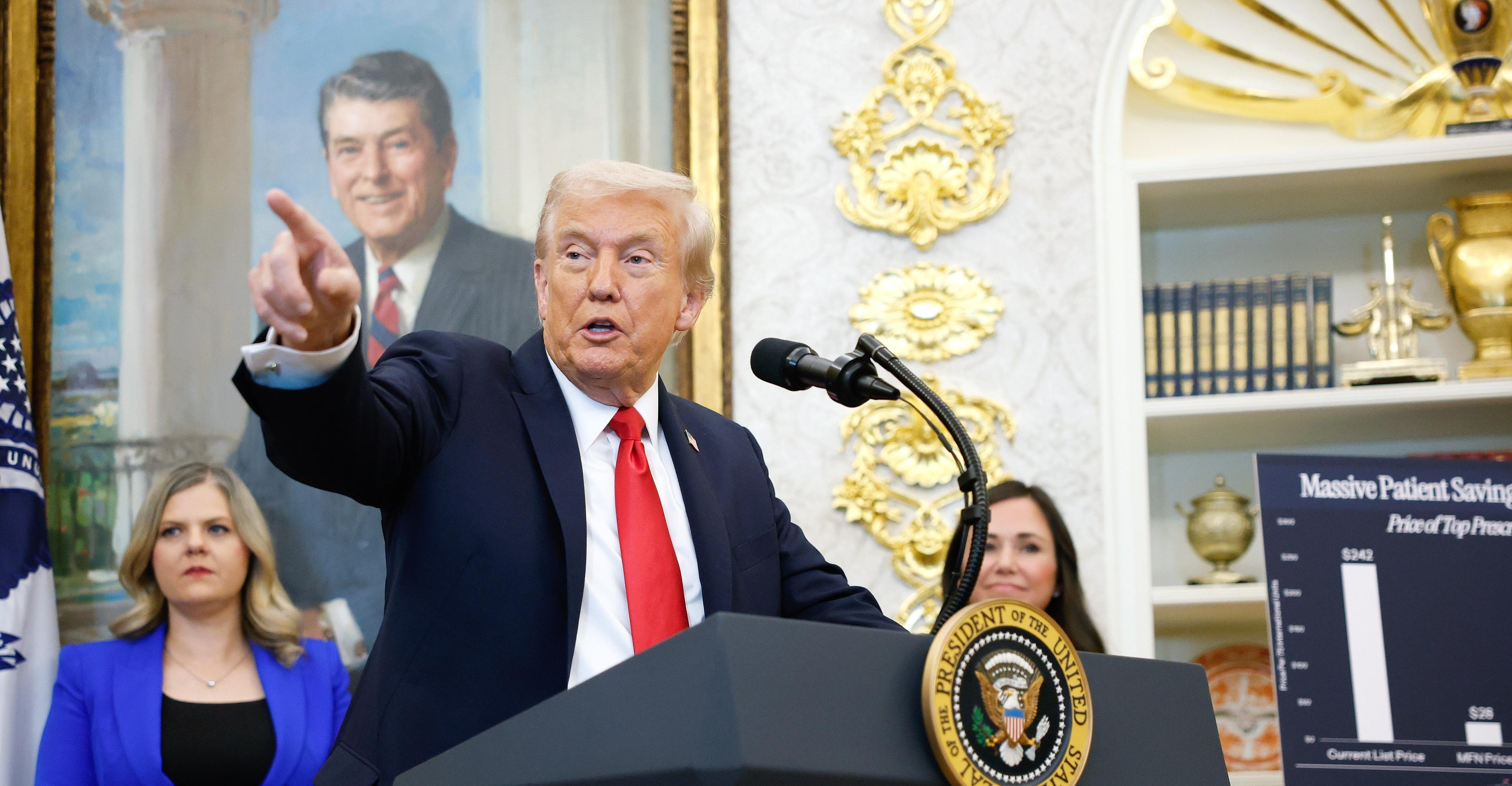I laughed out loud the first time I saw a folding phone. The contraptions, which debuted when the Samsung Galaxy Fold hit the market in 2019, are smartphones with bendable screens. You can fold them in half and put them in your pocket. That first Galaxy Fold …

Published 5 months ago on Jul 18th 2025, 7:00 am
By Web Desk

I laughed out loud the first time I saw a folding phone. The contraptions, which debuted when the Samsung Galaxy Fold hit the market in 2019, are smartphones with bendable screens. You can fold them in half and put them in your pocket. That first Galaxy Fold was huge, heavy, cost nearly $2,000, and looked like it would snap in half the first time you used it. When folded, the tiny display on the front was not enough screen. When unfolded, the device became a creased tablet and too much screen.
But after spending a few days with the latest iteration of that very gadget, which Samsung announced last week, I think the future of smartphones is more interesting than we thought.
We’ve all been beholden to smartphones for more than a decade. Although they’re wonderfully capable pocket computers, smartphones are also a source of work stress and a place for doomscrolling, all wrapped up in a piece of hardware that hasn’t evolved in a meaningful way in years. The new iPhone that will debut later this year, for example, will undoubtedly look and work a lot like last year’s iPhone. This lack of innovation is why people have been saying for about a decade that the smartphone era has run its course. Soon, they say, we’ll be wearing augmented reality glasses instead, or AI pins that we talk to.
[Media: https://www.tiktok.com/@verge/video/7525082320278244621]
Despite rumors of its demise — including those coming from AI maximalists like Sam Altman and Mark Zuckerberg — the smartphone will continue to be your most important gadget for a long while. That doesn’t mean you’ll continue to carry around the same boring slab of glass you’ve had in your pocket since the late 2000s. Foldables, an unfortunately named category of devices with shape-shifting abilities, are finally becoming an appealing alternative. In a lot of ways, it feels like the comeback of a much older device: the flip phone.
Samsung just released the $2,000 Galaxy Z Fold 7, which is effectively the same size and thickness as my iPhone 15 Pro but opens up to reveal an 8-inch screen (about the size of an iPad Mini). The company also released the $1,100 Flip 7, which is 4.1 inches of screen folded up but becomes a full-sized smartphone when unfolded. Motorola has a similarly futuristic flip phone, the Razr Ultra, and Oppo has a comparable folding phone, the Find N5. Things get even more mind-bending in China, where Huawei sells the Mate XT, a phone that folds twice. Dubbed a “trifold,” this form factor is basically a tablet that folds up like a brochure. Even Apple is reportedly working on a folding iPhone.
“If and when Apple enters this segment, they will create a lot of awareness,” said Francisco Jeronimo, vice president for data and analytics at IDC. “It will help the entire industry to move towards [foldables].”
Folding phones are supposed to adapt to your needs: Start with the smaller screen for basic tasks, like checking notifications, and then switch to the bigger screens for writing emails and watching videos. As someone who dreads reading anything long on a small screen, I get the appeal. I really like the idea of making the device smaller, as the Samsung Flip and Motorola Razr do, to give me less screen to stare at for basic functions. It also makes me nostalgic for a time when these devices didn’t fill up your entire pocket — or your attention span.
More than anything, the idea that smartphones still have a few tricks up their sleeves brings me hope that, even if people like Altman and Zuckerberg really want us to, we won’t all be wearing AI pins or smart glasses any time soon.
“Is the smartphone going to be replaced? I think at some point, yeah,” Gerrit Schneemann, a senior analyst at Counterpoint Research, told me. “But I think it’s going to take a long time for that to shift, so not in the next five years.”
The hunt for an iPhone successor
There was a time when people were obsessed with their phones, and these devices were a source of wonderment and fun. (This was well before we knew how phones were cooking our brains.) Companies like Apple, Google, and Samsung got into an arms race over how many cameras they could cram onto a device or how high the screen resolution could go.
By the late 2010s, however, the specs had more or less maxed out. Even cheap phones were really good. So people held onto their phones for longer, breaking the annual upgrade cycle. Devicemakers started inventing reasons to upgrade, like the introduction of 5G wireless technology, which was really important to carriers but didn’t impact consumers all that much. More recently, there’s been a similar push to upgrade your phone to take advantage of AI features, even when the ChatGPT app works just fine on most phones. Apple ended up getting sued several times over how it marketed its Apple Intelligence-capable iPhones.
Whatever the future of the smartphone is, standalone AI devices have not done well so far. In 2024, the Humane Pin, a $700 AI-powered device that clipped to your shirt and projected text messages onto your hand, became one of the biggest flops in gadget history, lasting less than a year on the market. The Rabbit R1, a smartphone-adjacent little box that promised to be a personal assistant, also got awful reviews last year. Even the Ray-Ban Meta glasses, which I’ve spent hours testing, currently struggle as a smartphone replacement (Meta has admitted as much). You can talk to the AI assistant, but you have to take out your phone to get anything done.
“I’m not sure why they’ve decided voice is a good input method, but I’m not totally certain users are actually ever going to be comfortable doing that,” said Max Weinbach, an analyst at Creative Strategies.
That brings us back to the familiar glow of a smartphone screen. Love it or hate it, this will continue to be your portal into the digital world for years to come — but probably not forever.
Meta, Apple, and Google are all working on their versions of augmented or mixed reality devices. In addition to the Ray-Ban glasses, Meta revealed the Orion glasses last fall, which project virtual elements onto the real world and make you look goofy in the process. Apple is expected to release the second-generation Vision Pro headset, a very expensive set of goggles that also mix the real and virtual worlds, later this year on the way to its own lightweight glasses. Both devices currently require you to keep a smartphone-sized component in your pocket for the glasses to work.
So we’re a ways away from a total smartphone replacement. Foldables, in the meantime, create a sort of bridge. If your hope is to spend less time staring at screens, a new-fangled flip phone like the Samsung Flip or the Motorola Razr is a good compromise, since the small screen ostensibly keeps you from looking at the big screen too much. If you want to be more immersed in your daily content, a device like the Galaxy Fold makes certain sense in the absence of a true augmented reality experience that turns the real world digital.
If you really just want more control over your screen time and you’re not enthralled by the idea of talking to an AI all day or dealing with anything foldable, I have to recommend the Light Phone 3. This compact device for digital minimalists is effectively a smartphone that’s been stripped of the most addictive features. I like to think of it as a weekend phone that lets you put your smartphone life on hold for an extended period of time. On the Light Phone, there is no app store, and thus, no TikTok or any other endless feeds. There are simply tools like maps, a music player, a messaging feature, and of course, a phone. As Kaiwei Tang, co-creator of the Light Phone, told me earlier this year, “We don’t want the device to try to fight for your attention, or be shiny. We wanted it to be calm, low key, and just disappear, even when you use it.”
I’ve tried out all of these form factors, because I’m a nerd and because it’s my job. As appealing as they are, I won’t be switching to either of Samsung’s foldable options permanently, because I am stuck in the Apple ecosystem and basically satisfied. I tried switching to the Light Phone, but as a young parent, I’m too dependent on being constantly connected — for better or worse. I also have a pair of Ray-Ban Meta glasses that I primarily use as sunglasses that can also play podcasts.
You could say that I’m stuck somewhere between the future and the past. As eager as I am for something new to come along and unify my digital life, as the smartphone did so many years ago, I find myself reaching for different devices for specific purposes. But I’m also nostalgic for the time when each gadget had its purpose, when a flip phone was what I used to make calls and an iPod was how I listened to music. My smartphone can do it all, sure, and it will for years to come.
A version of this story was also published in the User Friendly newsletter. Sign up here so you don’t miss the next one!

Arcade1Up isn’t dead, maybe
- 4 hours ago
Silver: NBA to explore relief for Heat over Rozier
- 3 hours ago
Water aggression against Pakistan: India curtails Jhelum flows after Chenab
- 11 hours ago
Harrison Ford to get lifetime acting award
- 11 hours ago

Trump’s attack on trans health care, briefly explained
- 2 hours ago

9 actually good things that happened to animals this year
- 2 hours ago

One of Trump’s grudges now threatens America’s weather forecasts
- 2 hours ago
Is eliminated Chiefs' Super Bowl window closing -- and what changes are ahead?
- 3 hours ago

Climate change is rewriting polar bear DNA
- 2 hours ago

Sony’s XM5 over-ear headphones are cheaper than ever — and they come with free wireless earbuds
- 4 hours ago
Heat F Jovic's MRI clean after hard fall; day-to-day
- 3 hours ago
More than 42mn children administered polio vaccination during final polio drive in Pakistan
- 15 hours ago
You May Like
Trending









